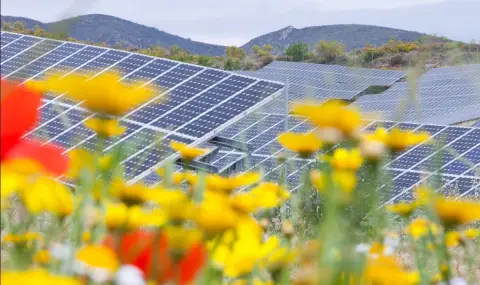On its way to a carbon-neutral future and in line with the National Strategy for Sustainable Energy Development Bulgaria plans to install about 20 GW of renewable energy (RES) by the middle of the century.
For this purpose, 11.8 GW of photovoltaic power plants, 5 GW of wind power plants on land and 3.3 GW of wind power plants at sea must be installed in our country. In this regard, the mapping and spatial planning of territories suitable for RES in our country stands out as an increasingly urgent necessity.
“WWF believes that disturbed and urbanized terrains should be prioritized for the development of renewable energy sources. In this way, we will not only minimize impacts on biodiversity and preserve natural landscapes, but also provide an opportunity to direct investments to areas that need reclamation. In addition, we will generate renewable energy as close as possible to consumers.”, explains Diana Dimitrova, director of “Environmental Protection Programs” in WWF Bulgaria.
WWF experts developed and publicly presented the first Basic Analysis of the potential for RES in disturbed and urbanized terrains in our country. It shows that Bulgaria has more than 50,000 hectares of disturbed and urbanized land suitable for solar energy production spread across the country. According to preliminary estimates, there is a potential to install RES capacities of nearly 18 GW on these lands. In addition, more than 1,700 disturbed areas on which wind energy can be developed have been identified in our country.
The study used publicly available information, as well as information received from the relevant authorities under the FDFA in the period June 2023 - March 2024. Part of the data was additionally digitized or converted into a format suitable for the analysis. The analysis itself is based on several groups of criteria: current land cover and land use, technical, property-legal and ecological criteria, for which parameters have been determined and, where applicable, limit values of the parameters.
“The criteria used in the analysis are not exhaustive, but they provide a systematic framework that can further be enriched and refined. Without such an analysis, it is very likely that the potential of these areas will not be used for sustainable energy production, and the conflict between RES and nature conservation will continue to deepen. The purpose of the document is to bring initial clarity and give guidelines to the competent authorities for subsequent steps of action.“, adds Dimitrova.
The analysis shows the need for joint efforts of the responsible institutions to create a unified database of disturbed and urbanized terrains, as well as to further survey their potential for installing solar and wind energy. Experts predict that if these actions are taken quickly and if they are supplemented with other regulatory and investment measures, this could lead to a redirection of RES investments from areas of high conservation value to these highly anthropogenic terrains. And this would limit the pressure on biodiversity and reduce the tension between the various stakeholders.
The project is extremely important, as it was launched at a tense moment against the background of the chaotic deployment of RES installations in our country, driven solely by investor interest and without spatial planning at the national or regional level. This creates tension between investors, conservation organizations and local communities.
In this regard, the aim of ReNewLand is to improve the cooperation and skills of key stakeholders in the field of RES. In addition, he will propose a methodology suitable for our region for the spatial determination of areas for accelerated development of RES, which will be based on economic, social and environmental constraints and will take into account the priority of disturbed and urbanized terrains for the development of RES.
This will help to overcome some of the main structural obstacles to the sustainable development of RES, which achieves a balance between a rapid energy transition, biodiversity protection and taking into account the needs of local communities.
